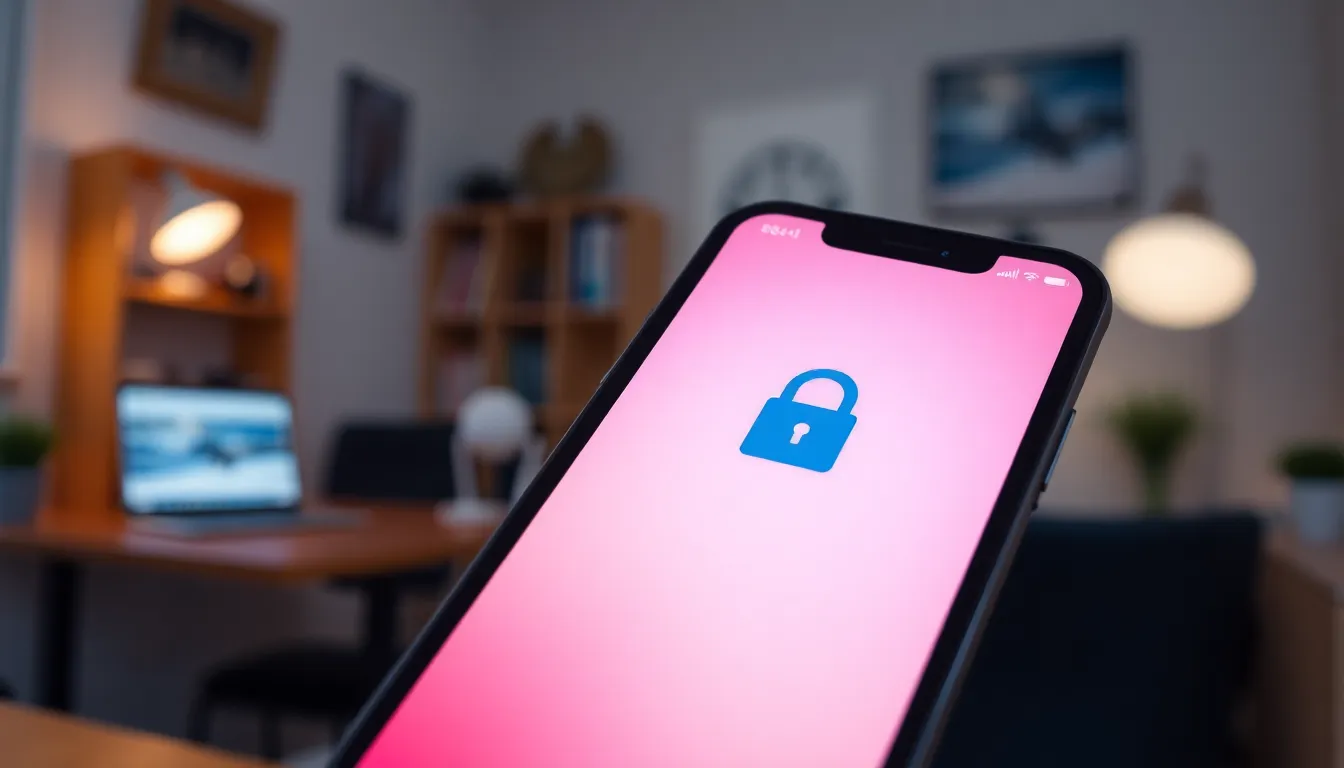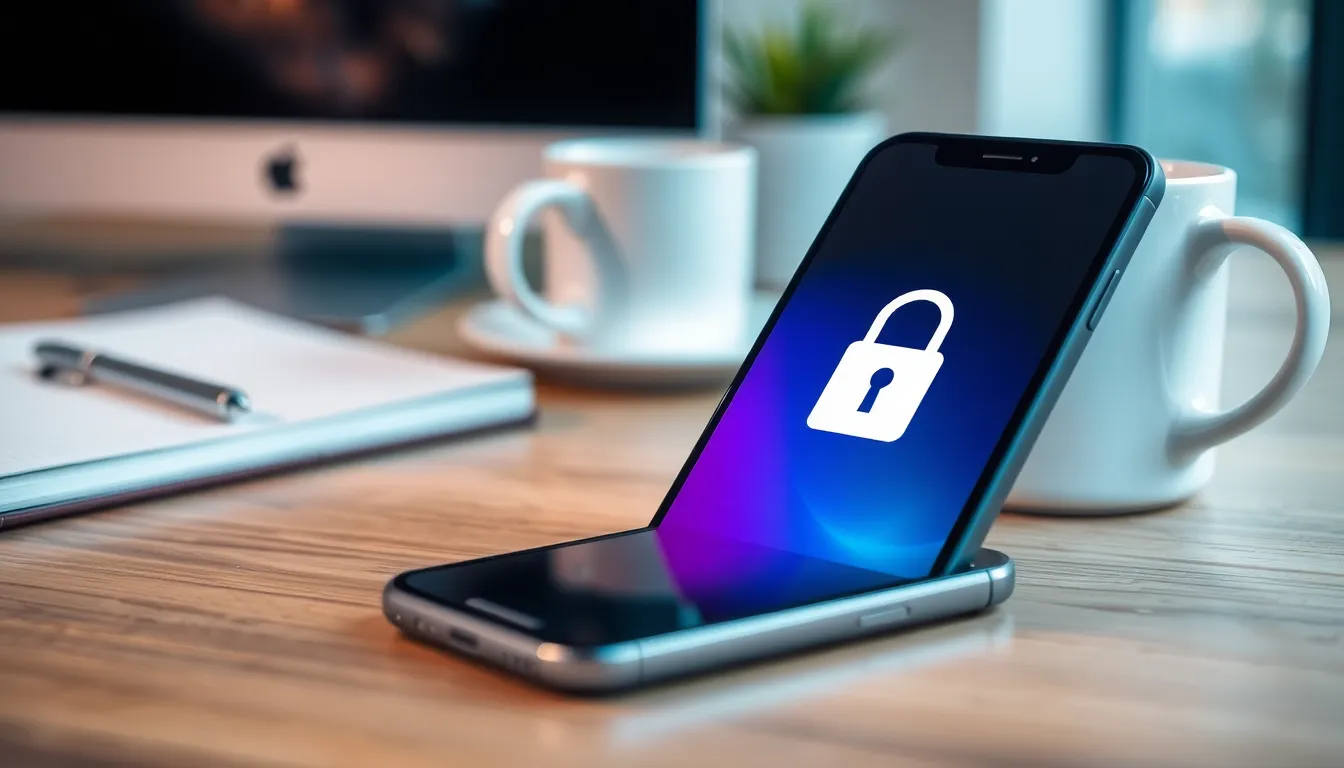In a world where smartphones are practically an extension of ourselves, the thought of a Trojan virus invading an iPhone might seem like a plot twist from a bad sci-fi movie. But hold on to your chargers—this isn’t just Hollywood fiction. As iPhones become more sophisticated, so do the threats lurking in the digital shadows.
Imagine your trusty device, once a fortress of security, now behaving like a rebellious teenager. Could it really fall victim to a Trojan? Spoiler alert: it can! While Apple’s security measures are top-notch, no system is completely invulnerable. Dive into the intriguing world of iPhone security as we explore whether those pesky Trojans can crash the party on your beloved device.
Table of Contents
ToggleUnderstanding Trojan Viruses
Trojan viruses pose a significant threat to smartphones, including iPhones. These malicious programs disguise themselves as legitimate applications, tricking users into installation.
What Is a Trojan Virus?
A Trojan virus is a type of malware that masquerades as a trustworthy software. Unlike traditional viruses, Trojans do not replicate themselves. Instead, they rely on user interaction to spread. Users might download them from unverified sources or through phishing attacks. Once on a device, Trojans can steal data, monitor activities, or compromise security.
How Trojan Viruses Work
Trojans operate by exploiting vulnerabilities in the operating system or apps. After installation, they can grant unauthorized access to hackers. Many Trojans create backdoor entries, allowing remote control of the device. Some might download additional malware or spy on user activities without detection. Engaging with harmful links or untrusted apps increases the risk of these viruses infiltrating devices.
iPhone Security Features

Apple prioritizes security with its array of built-in features designed to protect users from malware and other threats. These measures help maintain the integrity of the iPhone, fostering a safe environment for users.
Built-in Protections Against Malware
iPhones include several built-in protections that actively guard against malware. The App Store employs strict review processes, ensuring apps meet high security standards before approval. Sandbox technology isolates apps, limiting access to sensitive data and system resources. Additionally, features like biometric authentication enhance security by requiring user verification for app access. Users receive alerts for suspicious activity, further protecting personal information. Overall, these mechanisms work together to minimize the risk of malware infiltration.
Role of iOS Updates
iOS updates play a crucial role in maintaining iPhone security. Regular updates from Apple address vulnerabilities and enhance device defenses against emerging threats. Users gain new security features and patches to known issues with each update. Swift response to potential exploits is common, with updates released shortly after a vulnerability is discovered. Automatic updates ensure that devices remain protected without requiring user intervention. Consequently, maintaining up-to-date software significantly reduces the likelihood of Trojan virus attacks.
Can You Get a Trojan Virus on Your iPhone?
Trojan viruses can indeed target iPhones, causing concern among users. Understanding the threats helps in taking proactive measures against potential infections.
Common Myths and Misconceptions
Many people believe iPhones are immune to viruses, especially Trojans. This misconception arises from Apple’s reputation for security. However, ignoring threats doesn’t eliminate them. Users often assume downloading apps only from the App Store ensures safety, yet even legitimate-looking apps can harbor hidden dangers. Misunderstanding how Trojans function fuels the myth. They don’t replicate like traditional viruses but instead rely on user actions. Recognizing the reality of these threats helps users stay vigilant.
Real Risks and Vulnerabilities
Risks associated with Trojan viruses on iPhones are significant. Trojans can disguise themselves as innocuous apps, tricking users into downloading them. Once installed, they may access sensitive data, like passwords or financial information. Specially crafted phishing attacks pose additional risks, targeting individual users directly. Outdated operating systems can increase vulnerabilities, making it easier for malware to exploit weaknesses. Regular iOS updates are essential in mitigating these threats, as they continuously patch security holes. Awareness of these vulnerabilities empowers users to navigate their online activities with caution.
Prevention Tips for iPhone Users
iPhone users can take specific actions to minimize the risk of encountering Trojan viruses. Ensuring device safety requires adopting best practices and utilizing recommended security applications.
Best Practices for Keeping Your Device Safe
Stay aware of app sources to avoid malicious software. Download apps exclusively from the App Store, as Apple’s strict review process significantly reduces risks. Regularly update iOS to access the latest security patches and enhancements. This practice protects against known vulnerabilities, prioritizing device security. Activate two-factor authentication for Apple ID to provide an extra layer of protection. Avoid jailbreaking the device, as this compromises built-in security measures. Maintain vigilance regarding suspicious links in emails or messages. Exercising caution when providing personal information or making online purchases also contributes to safer online behavior.
Recommended Security Apps
Install trusted security apps to strengthen your iPhone’s defenses. Look for applications with positive reviews and a proven track record, such as Norton Mobile Security or McAfee Mobile Security. These apps offer real-time threat detection and privacy protection features. Additionally, consider using a password manager like 1Password or LastPass to store passwords securely. Explore VPN services for encrypted internet connections while browsing, which guards against data interception. Regularly review app permissions to ensure necessary access levels without compromising security. By adopting these tools, iPhone users can build a more secure digital environment.
The threat of Trojan viruses on iPhones shouldn’t be underestimated. While Apple’s security measures provide a robust defense, users must remain proactive in protecting their devices. By following best practices like downloading apps only from the App Store and keeping iOS updated, individuals can significantly reduce their risk of infection.
Staying informed about potential threats and employing trusted security applications can further enhance protection. Ultimately, a combination of vigilance and the right tools will help users navigate the digital landscape safely, ensuring their personal information remains secure.




